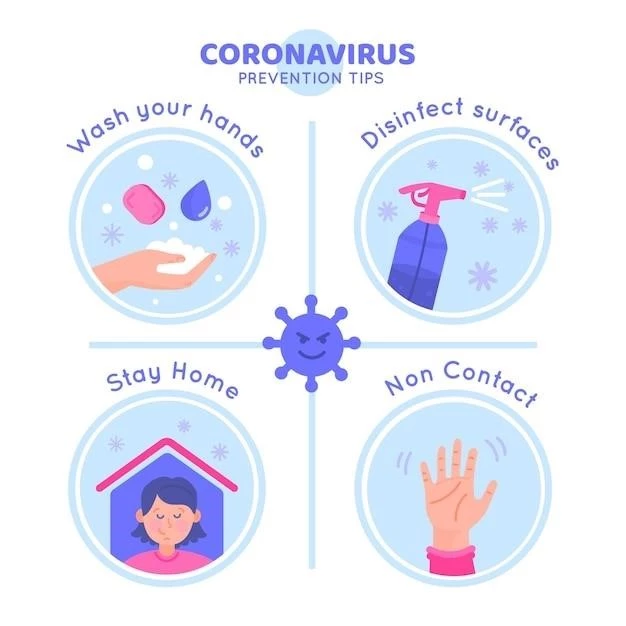Dysplastic Nevus Syndrome — A Comprehensive Guide
Understanding Dysplastic Nevus Syndrome is crucial‚ especially if there is a family history of melanomas. Monitoring moles for irregular borders or asymmetrical shape is key. Genetic mutations due to sun exposure play a role‚ so consultation with a dermatologist is highly recommended.
Understanding Dysplastic Nevus Syndrome
Dysplastic Nevus Syndrome is a condition characterized by atypical moles that may resemble melanomas. These moles can be larger with irregular borders and asymmetrical shapes. Individuals with a family history of melanomas are at higher risk.
Genetic mutations and sun exposure are significant factors in the development of dysplastic nevi. Regular monitoring of moles for changes is crucial in early detection. If any suspicious moles are identified‚ consulting a dermatologist for evaluation is essential.
Understanding the features of dysplastic nevi and the importance of monitoring can help individuals take proactive measures in managing their skin health. Stay informed‚ practice sun safety‚ and seek professional advice if you notice any changes in your moles.
Identifying Dysplastic Nevi
Dysplastic Nevi can be identified by their distinct characteristics. Look for moles that have irregular borders‚ asymmetrical shape‚ and variations in color. These moles are often larger than regular moles and can evolve over time.
If you have a family history of melanomas or if you notice any changes in your moles‚ it is crucial to consult a dermatologist for an evaluation. Early detection plays a key role in managing dysplastic nevi and reducing the risk of developing skin cancer.
Regular self-examinations can help in identifying any new or changing moles. Keep track of your moles and note any that exhibit unusual features. Seeking professional guidance for proper evaluation and monitoring is essential for maintaining skin health.
Causes and Risk Factors
The development of Dysplastic Nevus Syndrome is influenced by various causes and risk factors. Genetic mutations‚ particularly in genes associated with melanoma‚ can predispose individuals to this condition. Exposure to UV radiation from sunlight is also a contributing factor.
Individuals with a family history of melanomas are at an increased risk of developing dysplastic nevi. Additionally‚ frequent and intense sun exposure without adequate protection can raise the likelihood of developing atypical moles. Certain genetic factors may also play a role in the development of dysplastic nevi.
Awareness of these causes and risk factors can empower individuals to take preventive measures. Minimizing sun exposure‚ using sunscreen‚ and wearing protective clothing are essential for reducing the risk of dysplastic nevi and skin cancer. Regular monitoring and early detection are key components of effective management.
Link to Melanomas
Dysplastic nevi are closely linked to melanomas‚ the most serious type of skin cancer. While dysplastic nevi themselves are typically benign‚ they can sometimes transform into cancerous melanomas. Individuals with Dysplastic Nevus Syndrome have a higher risk of developing melanomas compared to the general population.
Regular monitoring of dysplastic nevi is essential to detect any changes that may indicate progression to melanoma. Early detection and intervention are crucial in preventing the development of advanced melanomas. If you have Dysplastic Nevus Syndrome‚ it is important to stay vigilant and promptly report any concerning changes to your dermatologist.
Understanding the link between dysplastic nevi and melanomas underscores the importance of proactive skin health management. By prioritizing monitoring and seeking medical attention for any suspicious changes‚ individuals can lower their risk of melanoma development and improve outcomes.
Importance of Monitoring
Regular monitoring of dysplastic nevi is paramount for individuals with Dysplastic Nevus Syndrome. Tracking changes in the size‚ shape‚ color‚ and texture of moles can help in early detection of any abnormalities. Timely identification of suspicious changes can lead to prompt intervention and better outcomes.
Developing a systematic approach to monitoring your moles‚ including performing self-examinations and scheduling regular check-ups with a dermatologist‚ is crucial. Be proactive in noting any new moles or alterations in existing ones. Any mole that exhibits irregular borders‚ asymmetrical shape‚ or changes in color should be promptly evaluated.
By prioritizing consistent monitoring and being vigilant about any changes in your moles‚ you can play an active role in managing your skin health. Early detection through monitoring can make a significant difference in the prognosis and treatment of Dysplastic Nevus Syndrome and related conditions.
Surgical Removal
For individuals with Dysplastic Nevus Syndrome‚ surgical removal of atypical moles may be recommended‚ especially if there are suspicious changes or a higher risk of transformation into melanomas. Surgical excision is a common procedure used to remove dysplastic nevi.
Consulting with a dermatologist or a healthcare provider experienced in skin surgeries is essential to determine the need for and appropriate approach to surgical removal. The procedure involves cutting out the mole along with a margin of normal skin around it to ensure complete removal.
Surgical removal of dysplastic nevi is crucial in preventing potential progression to cancerous melanomas. Following the procedure‚ proper wound care and monitoring for any signs of infection or complications are important. Be sure to adhere to post-operative care instructions provided by your healthcare provider.
Sun Exposure and Prevention
Managing sun exposure is essential for individuals with Dysplastic Nevus Syndrome to minimize the risk of developing skin cancers. Protecting your skin from harmful UV radiation can help prevent the formation of new dysplastic nevi and reduce the likelihood of existing moles turning cancerous.
Practice sun safety measures such as wearing sunscreen with a high SPF‚ seeking shade during peak sun hours‚ and wearing protective clothing like hats and sunglasses. Avoid tanning beds and prolonged sun exposure‚ especially if you have a higher risk of skin cancer due to Dysplastic Nevus Syndrome.
Educating yourself on the importance of sun protection and incorporating these habits into your daily routine can significantly contribute to maintaining healthy skin; By taking proactive steps to prevent excessive sun exposure‚ you can reduce the risk of dysplastic nevi progression and skin cancer development.

Family Counseling and Genetic Testing
Family counseling and genetic testing play crucial roles in managing Dysplastic Nevus Syndrome. Individuals with a family history of melanomas should consider genetic testing to assess their risk of developing atypical moles and skin cancer. Understanding your genetic predisposition can inform preventive measures.
Family counseling is beneficial for discussing the implications of genetic testing results‚ educating family members about the condition‚ and promoting early detection and monitoring practices. It can also provide emotional support and guidance on navigating the challenges associated with Dysplastic Nevus Syndrome.
Genetic testing can offer valuable insights into your risk profile and help tailor surveillance and preventive strategies. Collaborating with healthcare providers specializing in genetic counseling can lead to informed decisions about managing your condition and enhancing overall health outcomes.
Consultation with a Dermatologist
Scheduling regular consultations with a dermatologist is paramount for individuals with Dysplastic Nevus Syndrome. Dermatologists specialize in skin health and can provide tailored advice on monitoring dysplastic nevi‚ detecting changes‚ and managing skin cancer risks.
During dermatologist visits‚ your skin will be thoroughly evaluated for any concerning moles or skin abnormalities. Dermatologists can perform skin examinations‚ provide guidance on self-monitoring techniques‚ and recommend appropriate interventions if needed‚ such as surgical removal or further testing.
Establishing a collaborative relationship with a dermatologist who understands Dysplastic Nevus Syndrome can significantly enhance your skin health management. Be proactive in seeking regular check-ups and promptly reporting any changes or concerns regarding your moles to ensure early detection and timely intervention.
Lifestyle Changes for Prevention
Implementing lifestyle changes can contribute to the prevention and management of Dysplastic Nevus Syndrome. Maintaining a healthy lifestyle‚ including a balanced diet rich in antioxidants and nutrients‚ regular exercise‚ and adequate hydration‚ can support overall skin health.
Avoiding behaviors that increase skin cancer risks‚ such as smoking and excessive alcohol consumption‚ is essential. Additionally‚ managing stress levels and prioritizing sufficient sleep can help bolster your immune system and promote skin resilience.
Incorporating mindfulness practices‚ such as meditation or yoga‚ can also support overall well-being and reduce inflammation‚ which may play a role in skin health. By making proactive lifestyle changes‚ you can enhance your skin’s natural defense mechanisms and reduce the likelihood of dysplastic nevi progression.
Monitoring Changes in Moles
Regularly monitoring changes in your moles is critical for individuals with Dysplastic Nevus Syndrome. Keep a detailed record of your moles‚ including their size‚ shape‚ color‚ and any evolving characteristics. Self-examinations should be conducted monthly to track any modifications.
Be vigilant for any new moles‚ changes in existing moles‚ or symptoms like itching‚ bleeding‚ or tenderness. If you notice any irregularities such as asymmetry‚ irregular borders‚ varying colors‚ or diameter changes‚ promptly consult your dermatologist. Early detection of suspicious changes can lead to timely intervention.
Educate yourself on the ABCDEs of melanoma⁚ Asymmetry‚ Border irregularity‚ Color variations‚ Diameter larger than a pencil eraser‚ and Evolution or change over time. Understanding these signs can empower you to identify potentially cancerous moles and seek professional evaluation when necessary.
Conclusion
In conclusion‚ Dysplastic Nevus Syndrome poses unique challenges that require proactive management strategies. Understanding the features of atypical moles‚ the risk factors associated with genetic mutations and sun exposure‚ and the importance of regular monitoring are essential in preventing skin cancer development.
By prioritizing consultations with dermatologists‚ implementing lifestyle changes‚ and staying vigilant in monitoring changes in moles‚ individuals with Dysplastic Nevus Syndrome can take control of their skin health. Family counseling and genetic testing can further aid in risk assessment and personalized preventive measures.
Remember‚ early detection plays a crucial role in the effective management of Dysplastic Nevus Syndrome and reducing the risk of melanoma. Stay informed‚ practice sun safety‚ and seek professional guidance for any concerning skin changes. Empower yourself with knowledge and proactive skin health habits for a healthier future.
